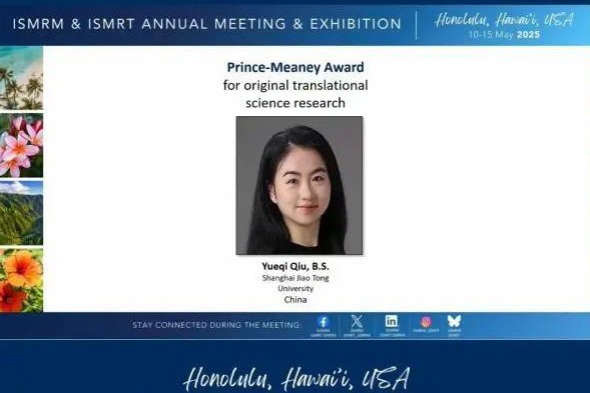Collaborative research probes antimatter

New technique may yield insights into why our universe is filled with matter
An international collaboration led by Chinese physicists has developed a new method to probe the differences between matter and antimatter, according to a study published on Thursday in the journal Nature.
Experts believed this new technique may yield insights into one of the biggest scientific mysteries to date: Why is our universe filled with matter?
In particle physics, every kind of particle has a corresponding antiparticle, which has the same mass as a given particle but with opposite electric or magnetic properties. The most well-known example of this principle is the negatively charged electron and its positively charged antiparticle, the positron.
The standard big-bang theory states that the universe should have produced the same amount of matter and antimatter at the beginning of everything. When matter and its antimatter collide, the particles and antiparticles destroy each other, releasing a large amount of energy and sometimes producing other particles like neutrinos and quarks.
Yet, for some unknown reason, everything we see today-from the smallest life form on Earth to the largest stellar object-is made up almost entirely of matter. In comparison, there is not much antimatter to be found and it would take enormous effort and engineering just to produce a tiny amount in a lab.
Something must have happened to tip the balance. This matter-antimatter asymmetry problem has puzzled the scientific community for more than half a century, leading to some hypothesizing that matter and antimatter may be following slightly different laws of physics.
The math and science behind this idea is notoriously complex. In short, if particles and antiparticles don't follow the same physical rules, this phenomenon is called a violation of charge conjugation and parity symmetry, also known as violation of CP symmetry or CP violation for short.
The standard model of particle physics predicts the existence of very small violations of CP symmetry. Hence, searching for CP violation is one of the most important ways to probe physics beyond the standard model and understand why there is an abundance of matter that we see today, said Wang Yifang, director of the Institute of High Energy Physics of the Chinese Academy of Sciences.
To achieve this goal, physicists have been trying to look for the subtle differences in decay patterns of particles and antiparticles in particle collider experiments. Particle decay describes the process of one unstable subatomic particle transforming into multiple other particles.
This type of experiment typically consists of a particle accelerator that uses electromagnetic fields to propel charged particles to very high speeds and energies, and smash these particles together to mimic the extreme conditions at the start of the big bang, which may produce antiparticles for research.
In the latest study, an international team of around 500 physicists from 17 countries conducted a particle physics experiment called the Beijing Spectrometer III at the Beijing Electron-Positron Collider II located in the Institute of High Energy Physics. The experiment was launched in 2008.
The experiment focused on a special particle called cascade hyperon, which contains three quarks, just like a proton, but also two heavier and unstable strange quarks, one of the six types of quark.
Scientists created this particle and its antiparticle by smashing high energy electrons and positrons together. Sometimes this process can produce quantum entangled cascade hyperon-antihyperon pairs, meaning the two particles are correlated despite not being in contact with each other.
Li Haibo, the spokesman of the BESIII Collaboration at the Institute of High Energy Physics of the Chinese Academy of Sciences, said these pairs allowed scientists to examine and study many properties crucial for understanding CP violations in unprecedented detail.
"The Beijing Spectrometer III experiment established a new angle on the search for CP violation," he said.
Although results from the Nature study showed no signs of CP violation, experts said the technique is promising and its statistical precision may increase when more samples and advanced facilities are available, which may either confirm or rule out CP violation beyond the standard model.
- Experts laud China's leadership in promoting ecological civilization
- China's coral spawning breakthrough offers fresh hope for threatened reefs
- Stranded dolphin returns to sea after receiving specialized care
- Report seeks unity for global ocean governance
- Reformed gaokao offered in 29 provincial-level regions
- Well-wishers help math scholar's video go viral





































